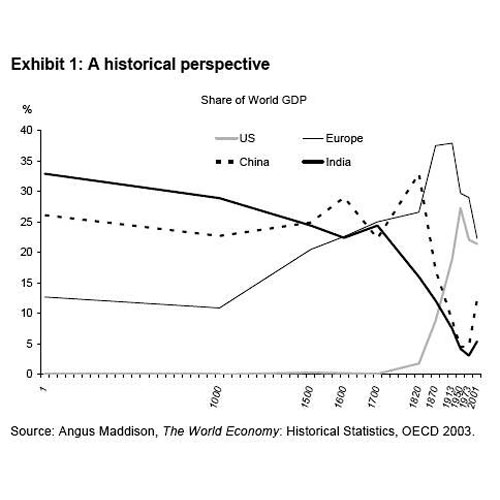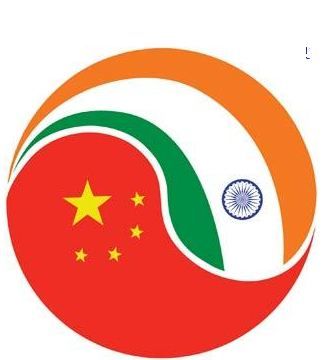The year 2004 was a watershed. That was when the OECD Development Centre brought out Prof Angus Madison’s path-breaking study on The World Economy: Historical Statistics. One of the key charts from his book is reproduced below (Prof Maddison died in 2010).
For India and China in particular, and for the world in general, it is a chart that suggests how the past may be finally catching up with us.

Maddison’s research shows that the economic growth of leading economies was in no way lineal. He tried to explain how the world had changed only in the past 1,000 years: “Over the past millennium, world population rose 22-fold. Per capita income increased 13-fold, world GDP nearly 300-fold.”
However, for India and China, the crisis began only around 1600 AD. Europe began catching up with the East, and began colonising huge parts of the world. By the 1700s, the US also emerged on the scene. But the US created wealth partly because of its entrepreneurship and also through a reverse colonisation – by acquiring lands belonging to others, and by ‘kidnapping’ people from Africa to work as slaves on their farms. The wealth of much of the West was thus a story of exploitation – of people, of countries and of the entire eastern world.
Unlike the West, India and China were never colonisers. Neither cherished dreams of world-conquest. Moreover, till 1600 AD, India and China were clearly the drivers of global trade and business. Colonisation, in particular, sapped both countries of their wealth and even their self-esteem. The scars are still visible.
Yet, as can be seen from global rankings, China has begun recovering faster than India both in terms of wealth and even self-esteem. Nevertheless, both economies have begun to realise that 500 years in a history of several thousand years can be only a wrinkle – just a blip.
The subconscious past has begun reasserting itself. Today, China and India together represent over 30% of the global population and over 45% of its purchasing power. This share is bound to become larger in the coming decades – but only if they work together.
China is already India’s largest trade partner. It is probable that such commercial ties will become stronger to mutual benefit.
However, unlike China, India continues to blunder along – selling away its resources cheaply, promoting crony capitalism, and apparently unwilling to craft policies based on the strength of what it has to offer.
In fact, the past ten years have shown how easy it is for a set of shortsighted policymakers to pauperise a nation — far more quickly than its erstwhile colonial masters were ever capable of.
Will India’s policymakers be capable of regaining its wealth and self-esteem? Or will it leave the field open to China alone?
The coming years should provide some clear pointers.










































COMMENTS